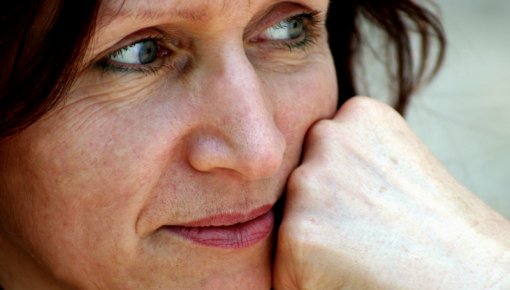Aidelsburger P, Schauer S, Grabein K et al. Alternative methods for the treatment of post-menopausal troubles. GMS Health Technol Assess 2012; 8: Doc03.
De Salis I, Owen-Smith A, Donovan JL et al. Experiencing menopause in the UK: The interrelated narratives of normality, distress, and transformation. J Women Aging 2018; 30(6): 520-540.
Deutsche Gesellschaft für Gynäkologie und Geburtshilfe (DGGG), Österreichische Gesellschaft für Gynäkologie und Geburtshilfe (OEGGG), Schweizerische Gesellschaft für Gynäkologie und Geburtshilfe (SGGG). Peri- und Postmenopause - Diagnostik und Interventionen (S3-Leitlinie). AWMF-Registernr.: 015-062. 2020.
Frackiewicz EJ, Cutler NR. Women's health care during the perimenopause. J Am Pharm Assoc (Wash) 2000; 40(6): 800-811.
Grant MD, Marbella A, Wang AT et al. Menopausal Symptoms: Comparative Effectiveness of Therapies. (AHRQ Comparative Effectiveness Reviews; No. 147). 2015.
Greendale GA, Lee NP, Arriola ER. The menopause. Lancet 1999; 353(9152): 571-580.
Leach MJ, Moore V. Black cohosh (Cimicifuga spp.) for menopausal symptoms. Cochrane Database Syst Rev 2012; (9): CD007244.
Melby MK, Lock M, Kaufert P. Culture and symptom reporting at menopause. Hum Reprod Update 2005; 11(5): 495-512.
Sergeant J, Rizq R. "Its all part of the big CHANGE": a grounded theory study of women's identity during menopause. J Psychosom Obstet Gynaecol 2017; 38(3): 189-201.
Shifren JL, Zincavage R, Cho EL et al. Women's experience of vulvovaginal symptoms associated with menopause. Menopause 2019; 26(4): 341-349.
Soares CN, Cohen LS. The perimenopause, depressive disorders, and hormonal variability. Sao Paulo Med J 2001; 119(2): 78-83.
Tunstall-Pedoe H. Myth and paradox of coronary risk and the menopause. Lancet 1998; 351(9113): 1425-1427.
Weltgesundheitsorganisation (WHO). Research on the menopause in the 1990s. Report of a WHO Scientific Group. World Health Organ Tech Rep Ser 1996; 866: 1-107.
IQWiG health information is written with the aim of helping people understand the advantages and disadvantages of the main treatment options and health care services.
Because IQWiG is a German institute, some of the information provided here is specific to the German health care system. The suitability of any of the described options in an individual case can be determined by talking to a doctor. informedhealth.org can provide support for talks with doctors and other medical professionals, but cannot replace them. We do not offer individual consultations.
Our information is based on the results of good-quality studies. It is written by a team of health care professionals, scientists and editors, and reviewed by external experts. You can find a detailed description of how our health information is produced and updated in our methods.

